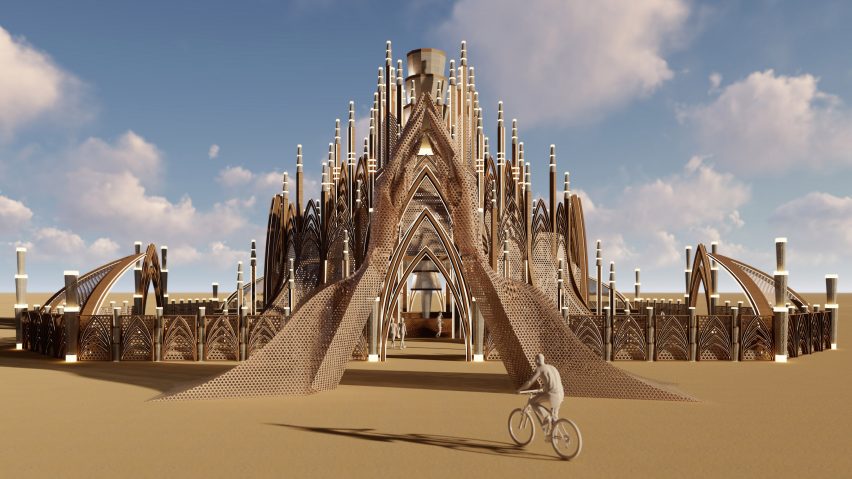
Burning Man 2024 temple design balances the "domestic and majestic"
A team led by artist Caroline Ghosn has unveiled the design of this year's Burning Man temple, a structure combining elements of church architecture and Lebanese weaving techniques.
Called Temple of Together, the structure will rise more than 70 feet (21 metres) above the desert landscape of the annual Burning Man festival in Nevada.
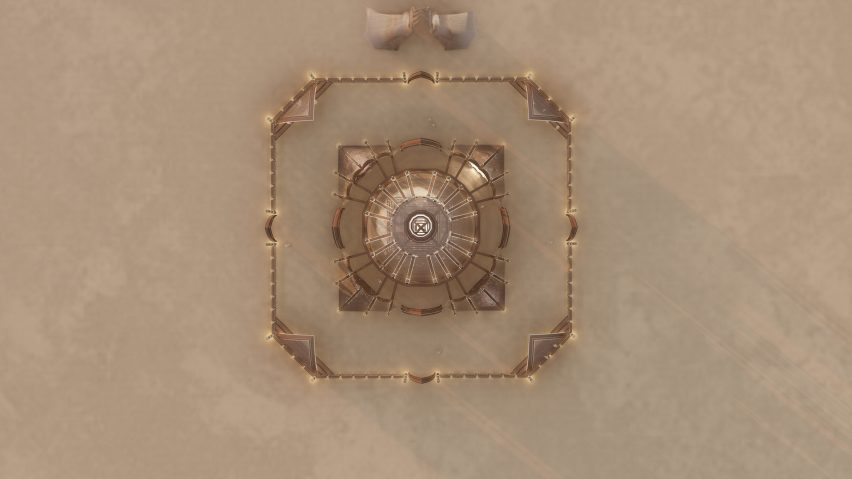
Ghosn collaborated with architect Maissa Sader of Kamai Studio on the design of the temple, which will be lit on fire at the end of the nine-day festival that takes place in late September.
The team conceived of a temple that incorporates features of gothic architecture including pointed arches and buttresses as well as aspects of Lebanese Khaizaran weaving.
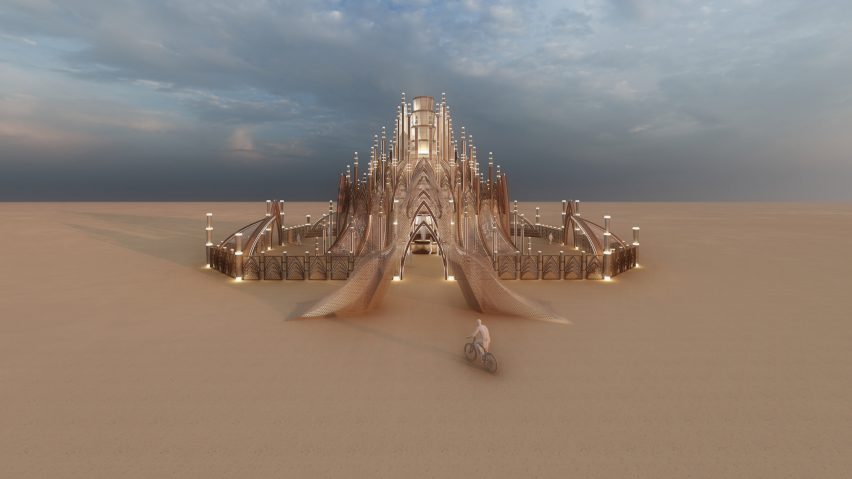
The structure will comprise an exterior fence with a gateway covered by a monumental sculpture in the shape of two hands with fingers touching. It will contain an outer layer and an inner sanctum with a dome and a massive central column meant to project a beam of light into the sky at night. Drapery will also be included in this inner space.
A series of smaller columns with lights attached will be spread throughout the structure, all with smaller light elements attached to provide illumination for visitors.
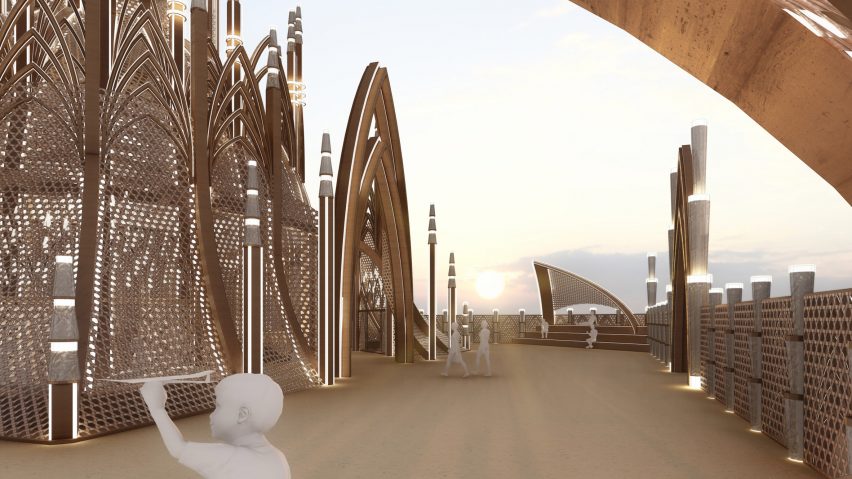
Over the facade of the structure, wood woven in traditional Khaizaran patterns – reflecting Ghosn and Sader's shared Lebonese heritage – will create a "skin" over the facades of the structure.
According to Ghosn, the design is an experiment in holding together the "duality" of small-scale craft and large-scale architecture, creating a space for visitors to reflect in peace.
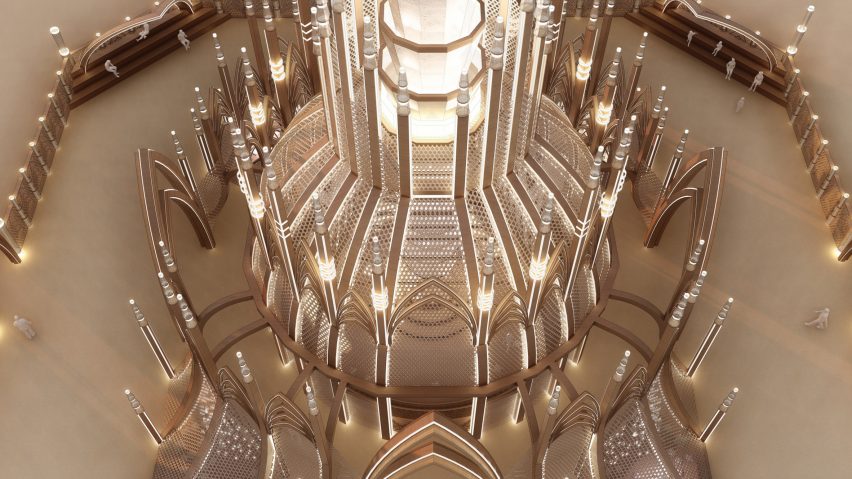
"Every tension like this is an opportunity for integration," she told Dezeen. "We thought it was surprising and delightful and interesting to step right into that tension."
"There's this constant duality of the domestic and the everyday scale with the majestic," she continued.
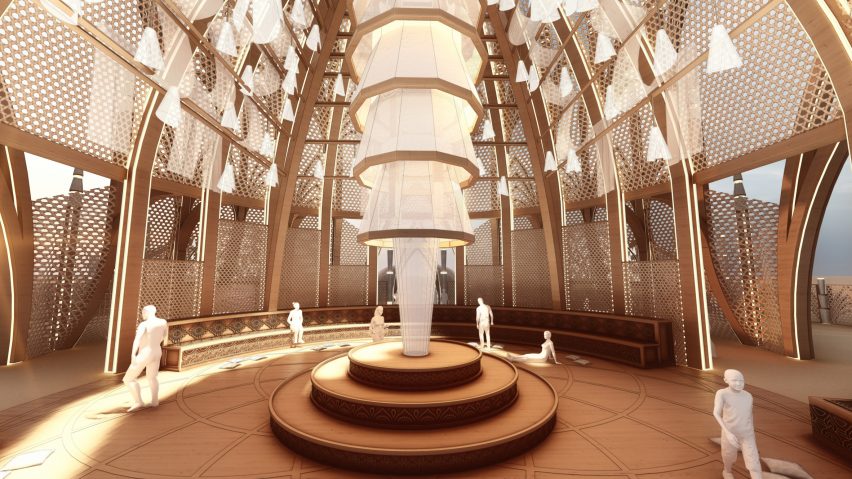
Ghosn said that the team is now exploring the different material options, considering safety while trying to achieve the goal of making sure the temple is "more sustainable".
Based on fire safety requirements, the materials need to be a of a sufficient thickness, so they will experiment with the proper material to use for the weave.
The structural elements will be made from new timber, while other non-structural timber – like the fence and arches – will be made from wood recycled from past installations as well as from wood salvaged from trees killed by pine beetles. This is similar to the 2017 temple by Marisha Farnsworth and Steven Brummond, whom Ghosn and her team are consulting for this year's build.
Ghosn also noted that there are social and community aspects to the project. First, the temple will involve more than 1,000 volunteer contributors both in its planning and pre-fabrication and in the installation.
During the fabrication process, the team will open a shop at The Loom in Oakland, an "urban village" geared towards the reinvigoration of the arts in the area.
"There are very few spaces left in the Bay Area where artists can create large-scale art," she said. "The Loom is preserving one of the last bastions of that, and we're excited to build there to support them in that mission."
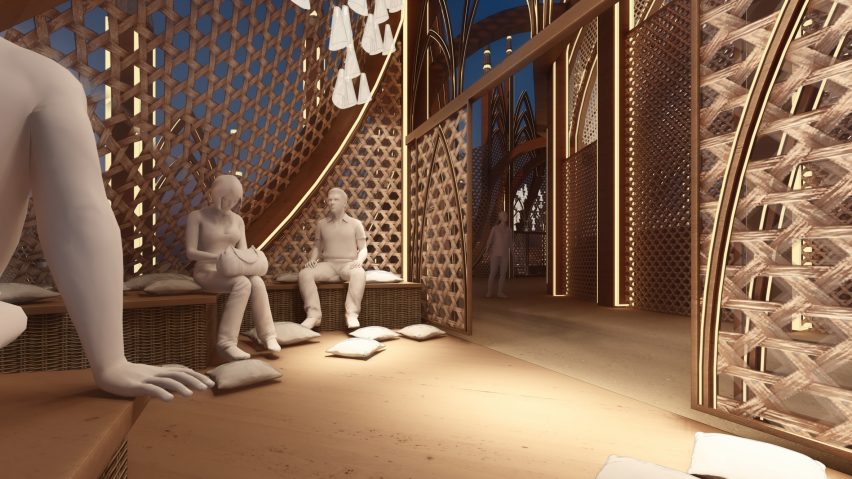
Ghosn has participated in several Burning Man iterations and was selected for this year's temple through a grant program, which provides some funds to its winner for the construction of the temple.
Every year a different team is selected to design and build the temple, though some members stay on from year to year to provide expertise in the logistical challenges Burning Man, sited in a remote desert without infrastructure, entails.
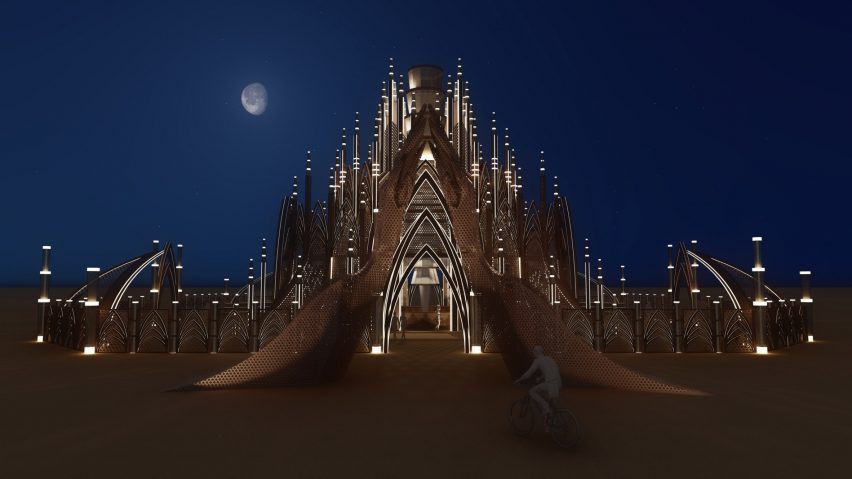
For 2023, designers Ela Madej and Reed Finlay created a temple that resembled an upside-down flower.
The renderings are by Maissa Sader.
Burning Man is set to take place from 25 August to 2 September 2024. For events, talks and exhibitions in architecture and design visit Dezeen Events Guide.